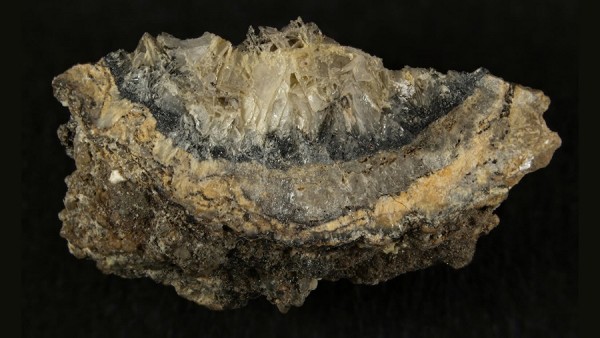By Ana Verayo, | March 02, 2017

Minerals such as Abhurite were indirectly created by humans. (University of Maine)
In a fascinating new study, scientists suggest that humans have created more than 200 new minerals on Earth in just a span of a few decades. Scientists say that this is strong evidence that we are now living in a new geological era known as the Anthropocene epoch.
These "Anthropocene minerals" are not classified as crystalline compounds that are created on purpose like those used for laser technologies and as building materials. Instead, these new minerals are mostly compounds that are made by accident due to human activity on the planet.
Like Us on Facebook
A team from the University of Maine argues that these new minerals are evidence that we have entered the Anthropocene era. According to Edward Grew from the School of Earth and Climate Sciences at the University of Maine, these 208 anthropogenic minerals were created just a few decades ago.
These can be classified as anthropogenic since the compounds do not possess the chemical or mineral structure of any officially recognized crystal. Apart from this, it if these minerals are recognized by the International Mineralogical Association after 1995, then this means that these are not created on purpose.
Before this period, several minerals that were used for technological applications were known as "grandfather minerals." However, the number of anthropogenic minerals formed indirectly by any human activity is more than the total number of crystal substances created on purpose.
To date, there are 180,000 minerals created by humans, which is 36 times more than natural minerals formed within the Earth's interior. This number might not seem like a lot, but these 208 new anthropogenic minerals comprise four percent of the officially recognized 5,200 minerals that are discovered in the world.
What do these new man-made minerals look like? These crystals appear as yellow, orange and green crystals that are known as the mineral Andersonite. They are found within abandoned uranium sites in the southwestern states in the United States. They cannot be created naturally in other parts of the planet.
Others include Wheatleyite that can be found at ore dumps from mines. Calclacite is also known to grow only in old cabinets in museums and nowhere else in nature. According to Robert Downs from the University of Arizona, human influence is pervasive today, and there might be hundreds of unrecognized minerals hidden in old mines, smelters and even abandoned buildings and other sites.
There might be even new compounds forming on solid waste dump sites exposed to electronics and old appliances and other technology waste that are all exposed to weathering and alterations. This new study was published in the journal American Mineralogist.
-
Use of Coronavirus Pandemic Drones Raises Privacy Concerns: Drones Spread Fear, Local Officials Say

-
Coronavirus Hampers The Delivery Of Lockheed Martin F-35 Stealth Fighters For 2020

-
Instagram Speeds Up Plans to Add Account Memorialization Feature Due to COVID-19 Deaths

-
NASA: Perseverance Plans to Bring 'Mars Rock' to Earth in 2031

-
600 Dead And 3,000 In The Hospital as Iranians Believed Drinking High-Concentrations of Alcohol Can Cure The Coronavirus

-
600 Dead And 3,000 In The Hospital as Iranians Believed Drinking High-Concentrations of Alcohol Can Cure The Coronavirus

-
COVID-19: Doctors, Nurses Use Virtual Reality to Learn New Skills in Treating Coronavirus Patients







